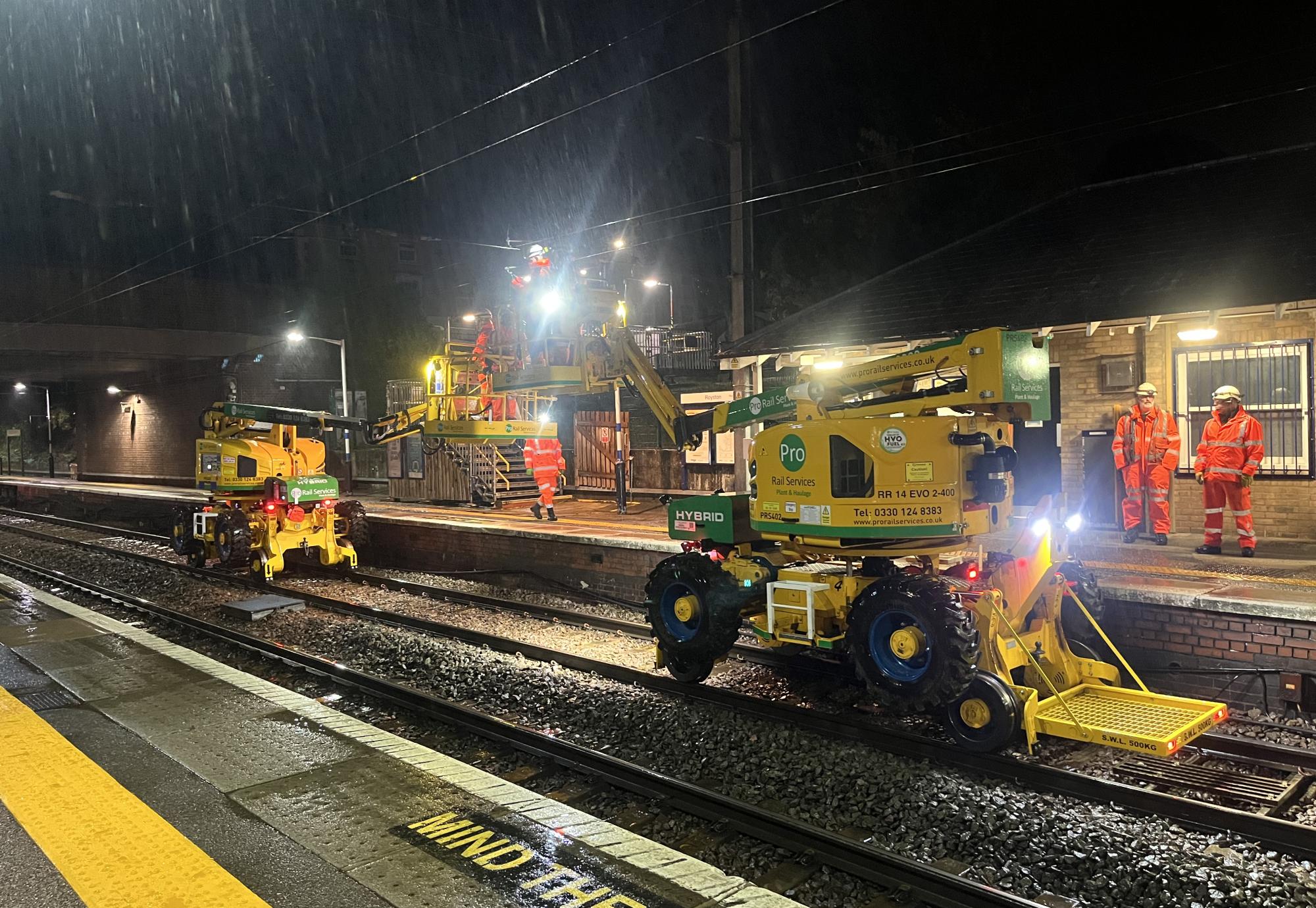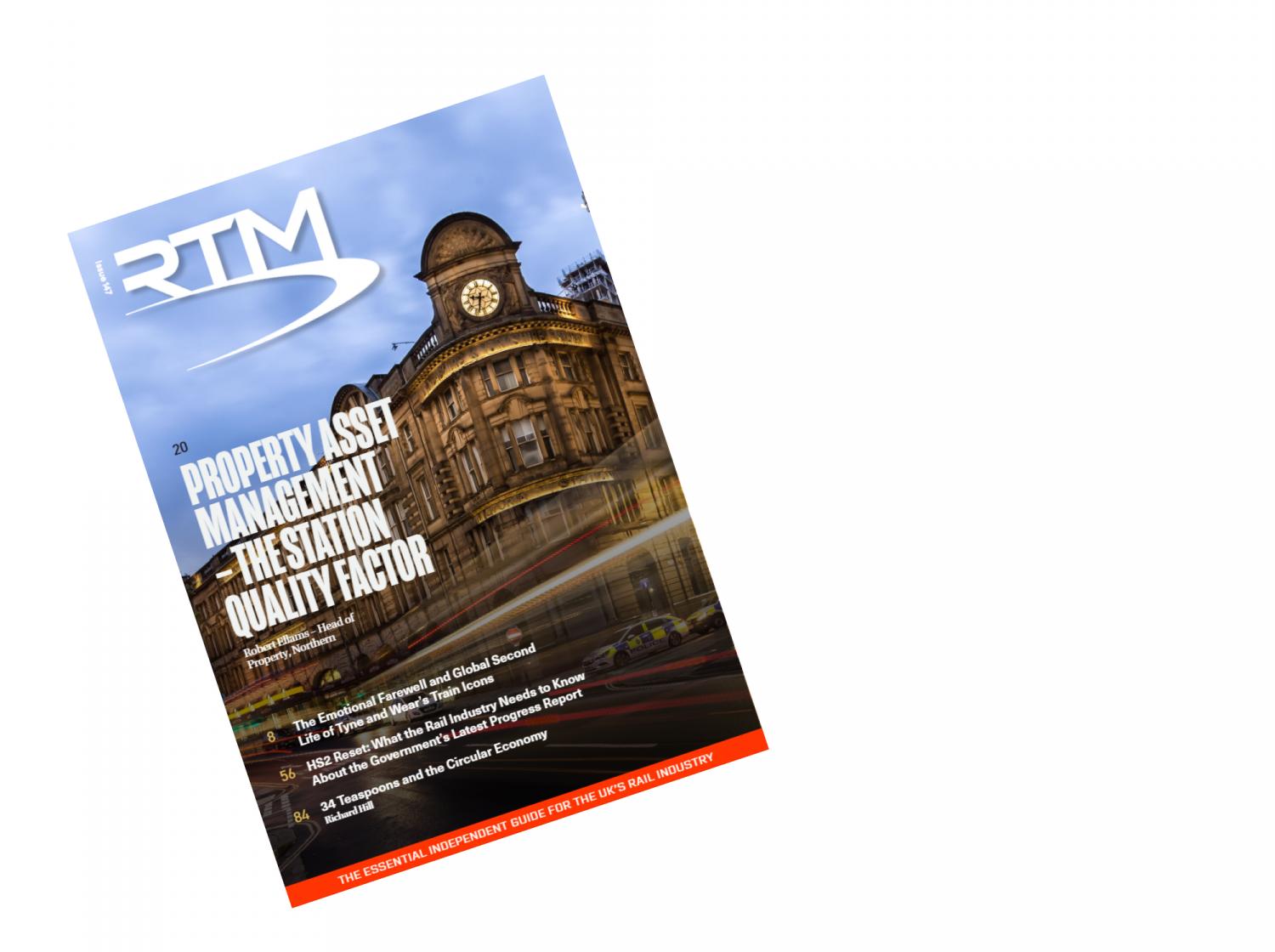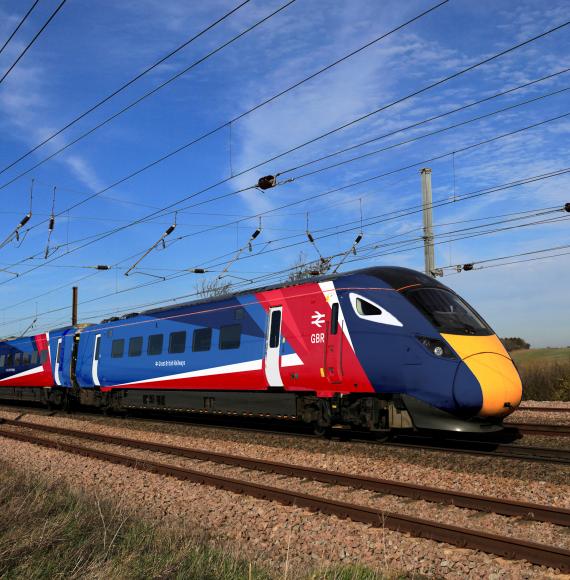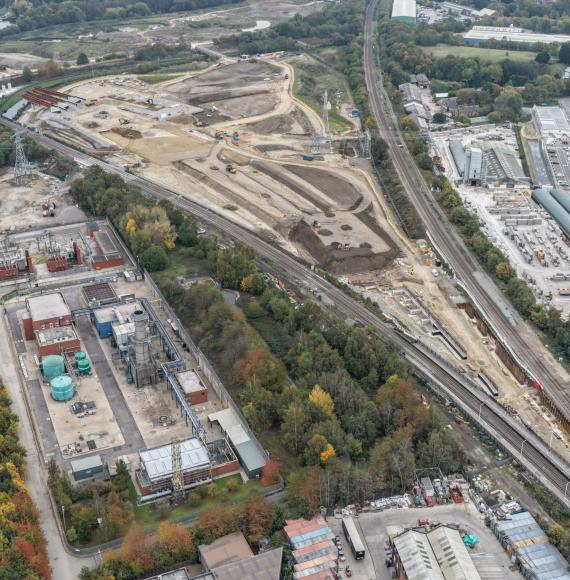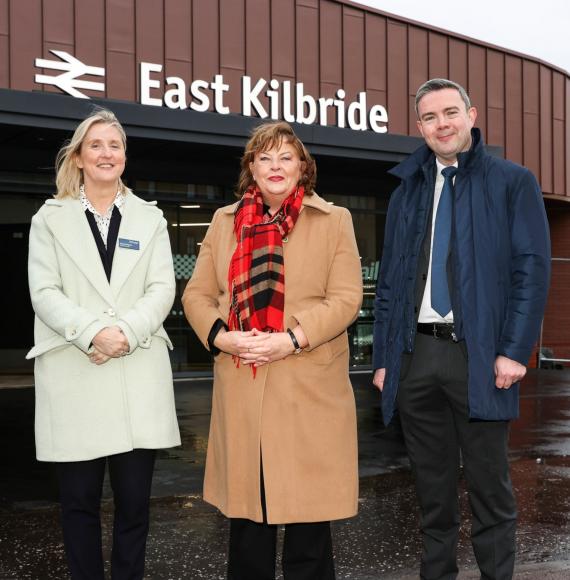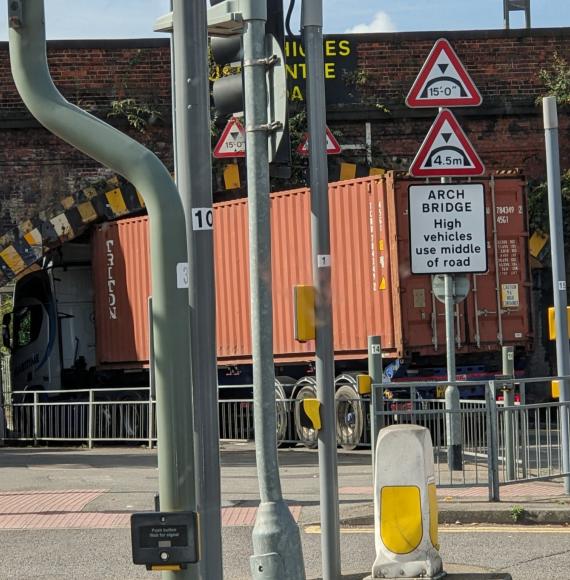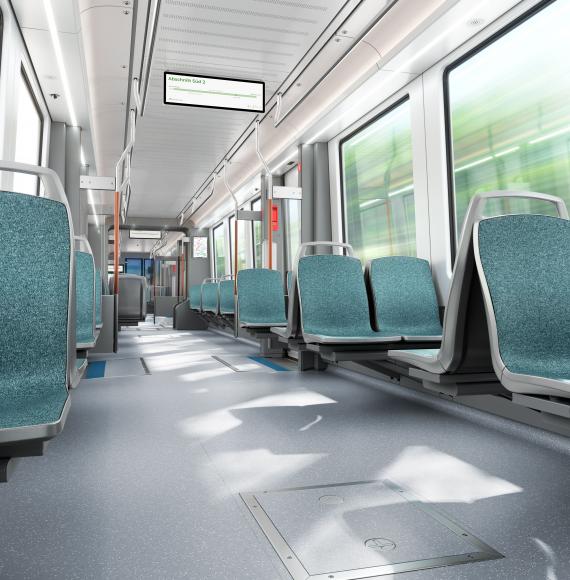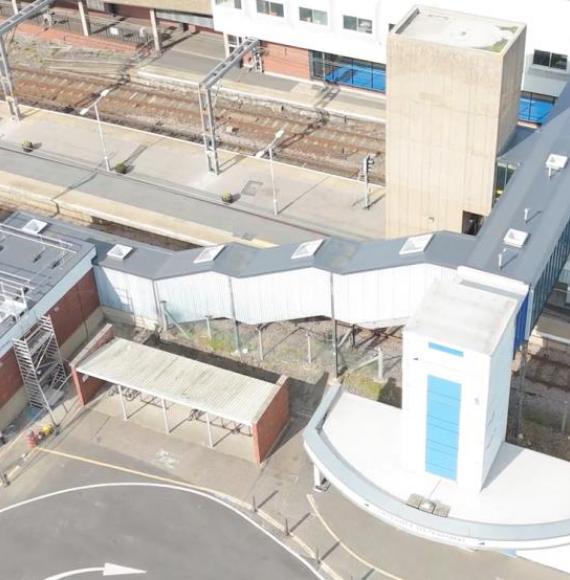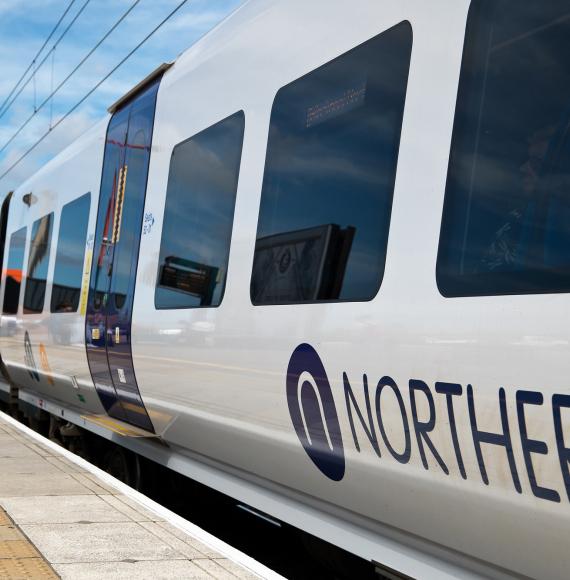Network Rail has completed a set of engineering work at Royston station in Cambridgeshire, which is the first in the Eastern region to be carried out with zero carbon emissions. Teams worked over four nights to complete overhead line equipment renewals, using hybrid rail engineering vehicles, battery-powered welfare facilities, and battery and solar powered tower lighting throughout the site.
Engineers also used battery-powered tools and recyclable materials, such as plastics, paper, and other consumables. This way of working meant that zero carbon emissions were emitted on the site, which is a first for Network Rail in the Eastern region.
The organization is looking at ways to roll this out across future engineering worksites after the success of this pilot with the ambition that zero emission worksites will aid Network Rail on its way to reaching its target of being net zero by 2050.
Hamish Critchell-Ward, environment manager at Network Rail, said: "This is a hugely positive step forward for Network Rail and the rail industry. We're passionate about finding better, more environmentally friendly ways of carrying out essential maintenance and this is a great example of that.
"It has been great to work with industry partners on this project. Their support has been invaluable in helping this pilot be as successful as it has been. As we move forward and develop, Network Rail will continue to work closely with its supply chain to deliver environmental benefits during its work.
"This is just the beginning for us and we're confident that this way of working will expand further into future engineering work."
Owen Laws, electrification & sustainable development project manager at Network Rail, said: "This project has been months in the planning and preparation, and I'm delighted that it has finally come to fruition and been so successful.
"We want this to be a rolling programme of work throughout Network Rail and I'm looking forward to helping other teams deliver engineering work projects in a more sustainable way.
"Renewing our overhead line equipment at Royston creates a more resilient railway network, improves reliability, and means more reliable journeys for passengers."
Photo Credit: Network Rail

